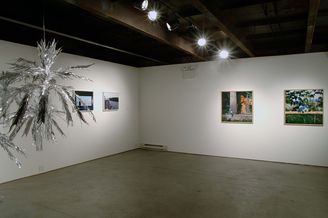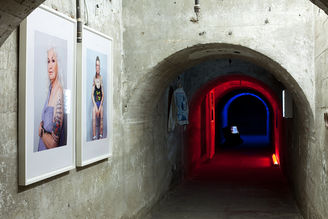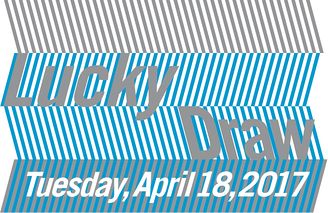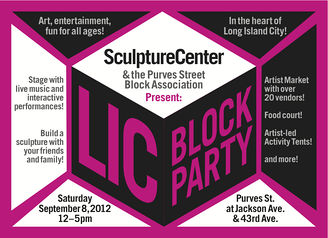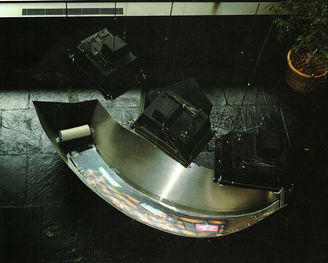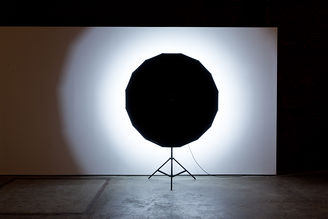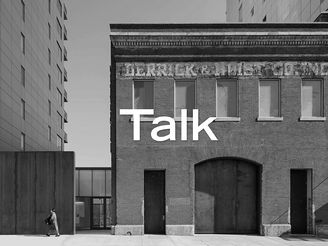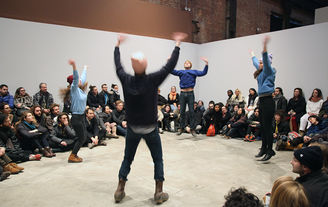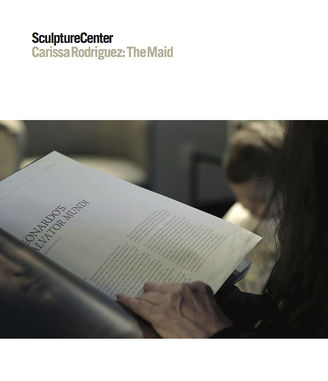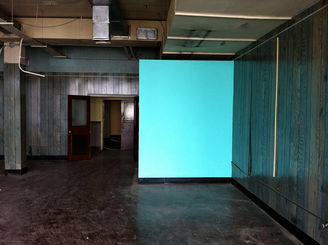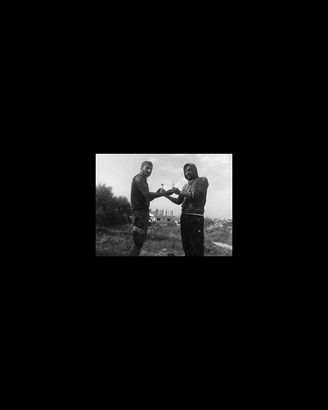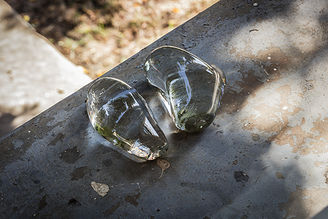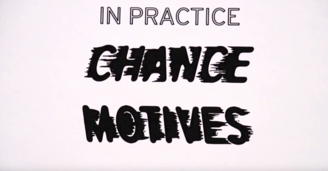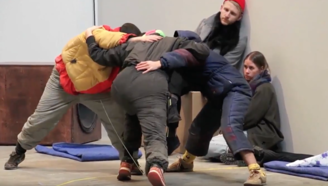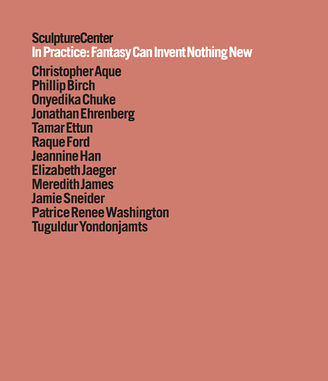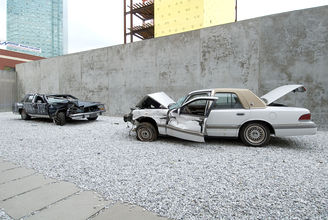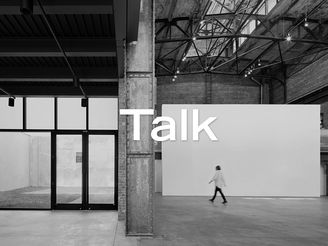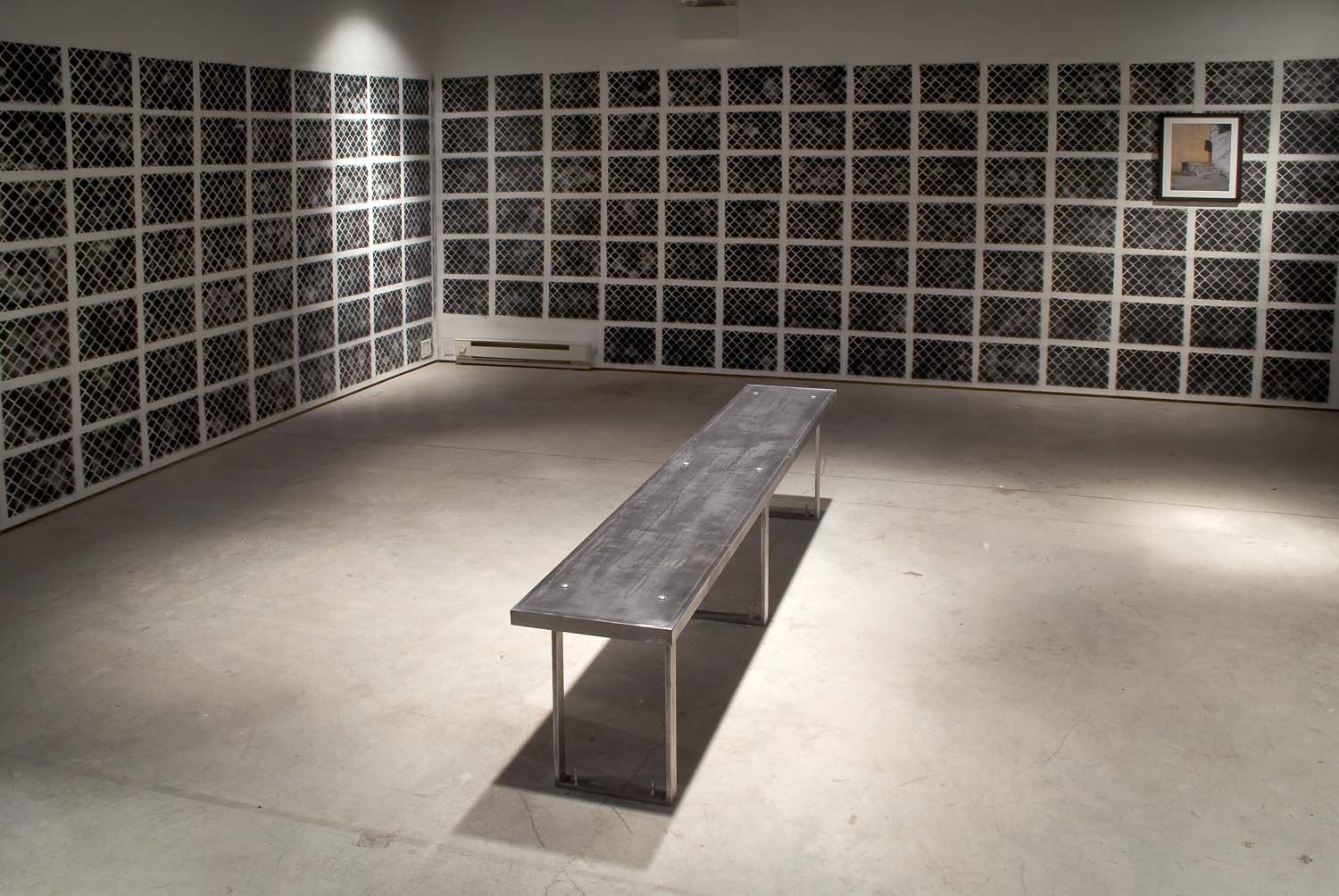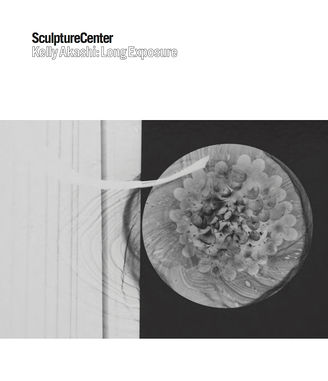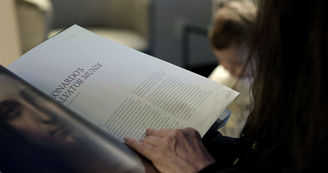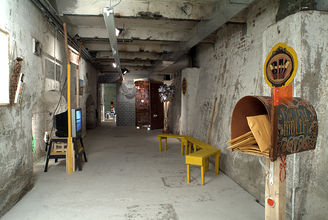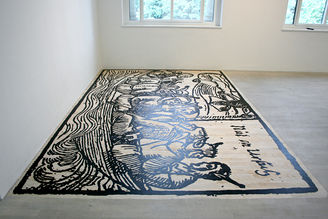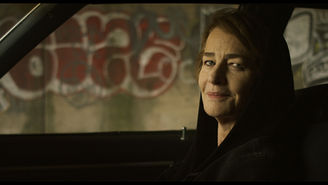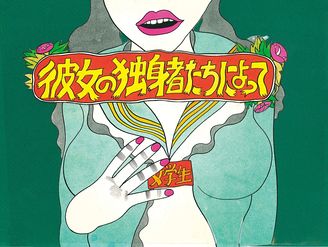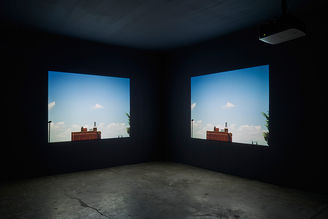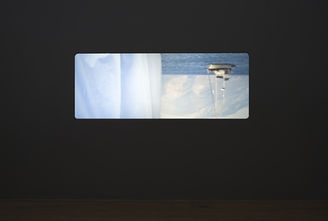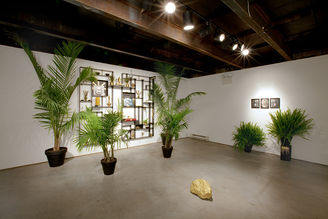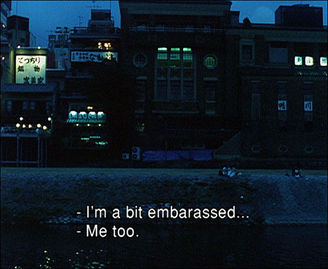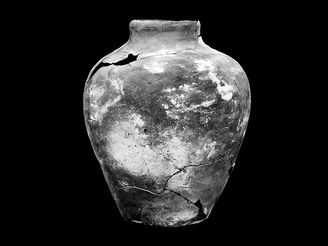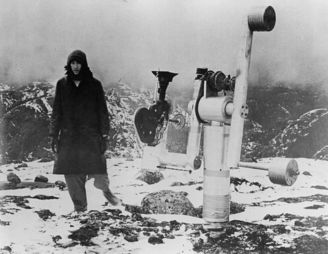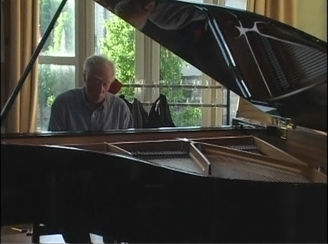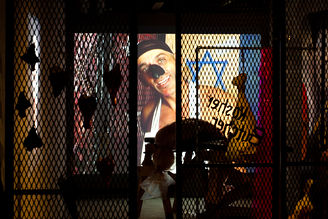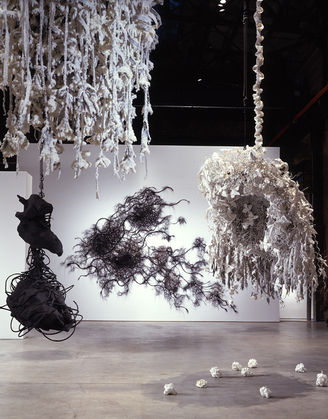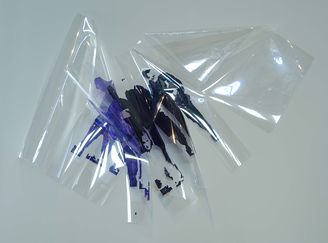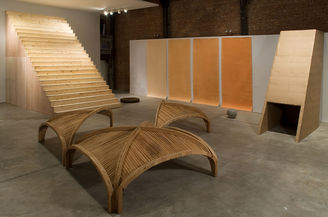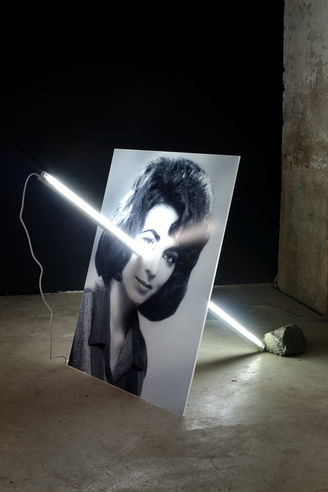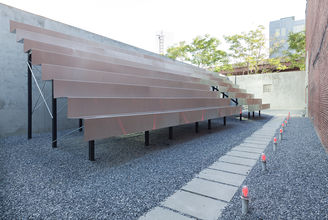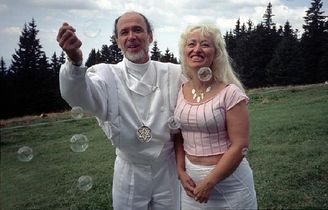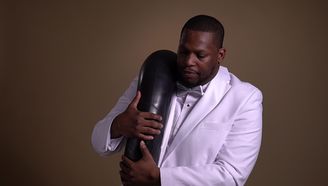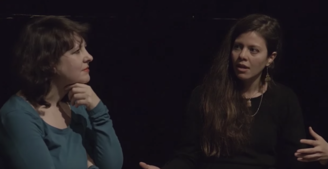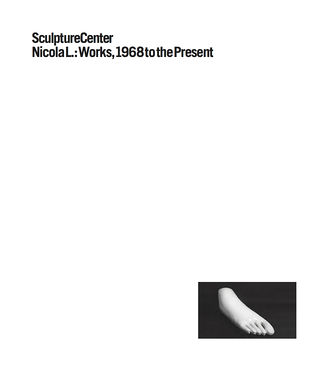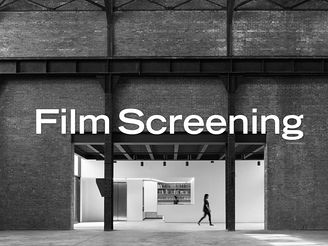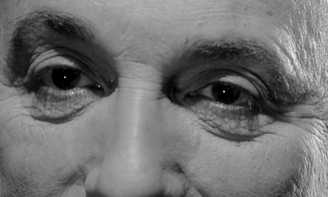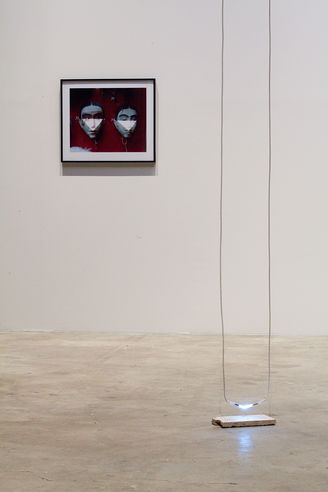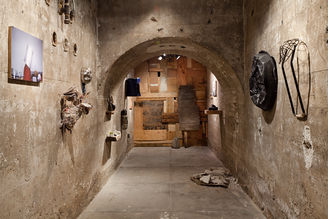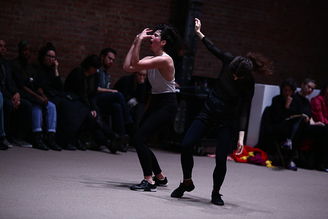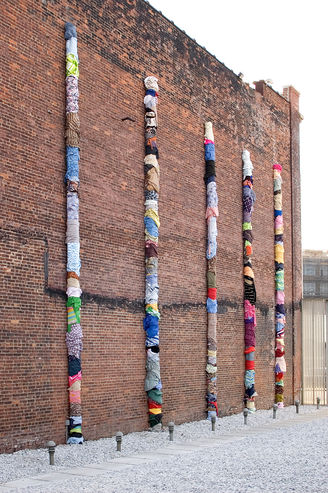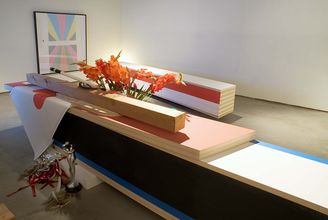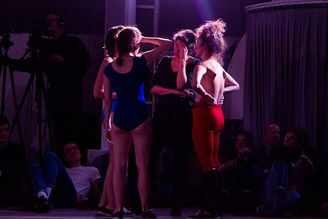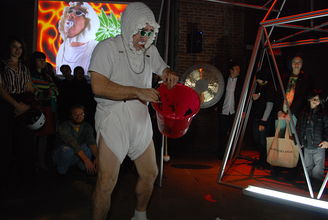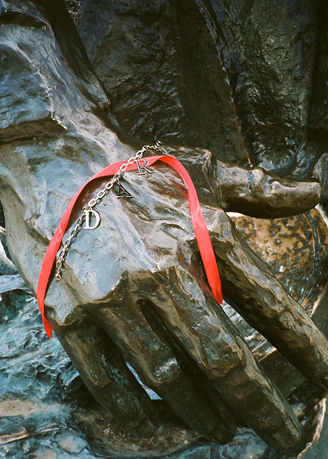Short Stories, Part Three: Alejandro Cesarco and Ursula Mayer
Short Stories, Part Three: Alejandro Cesarco and Ursula MayerNov 12–Dec 4, 2011
- Images
- Text
- Events
- Press
- Sponsors
- Related
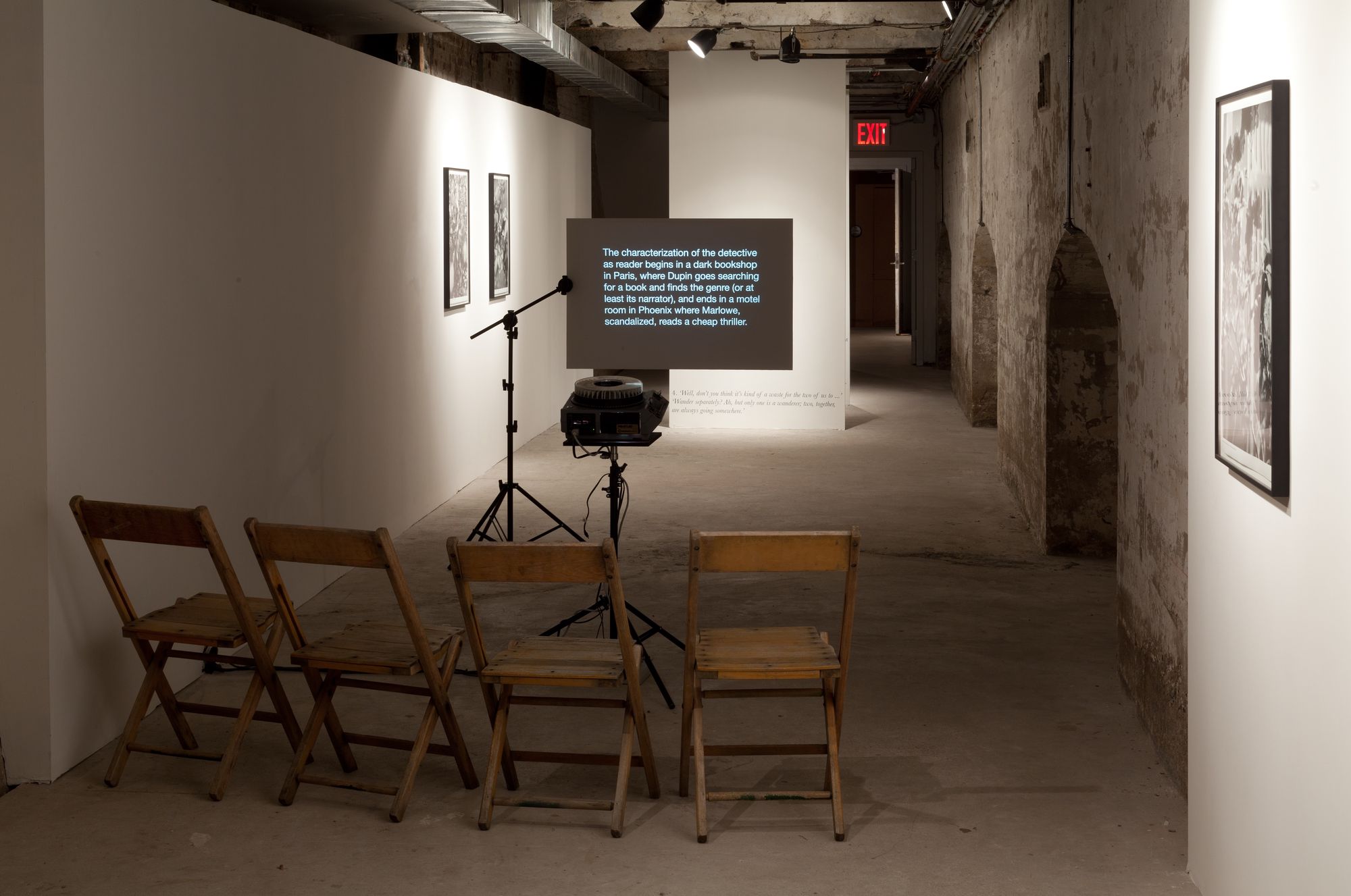
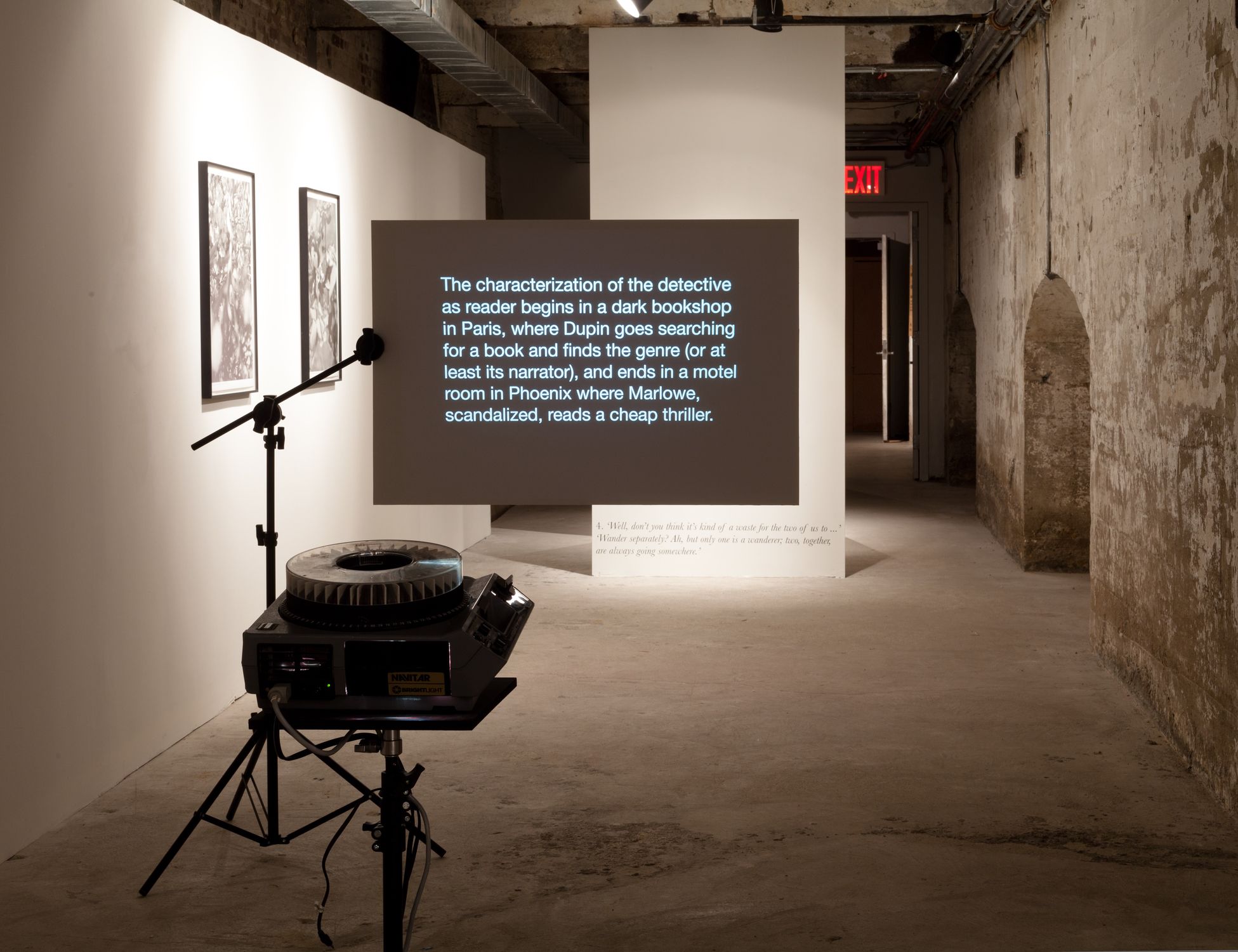
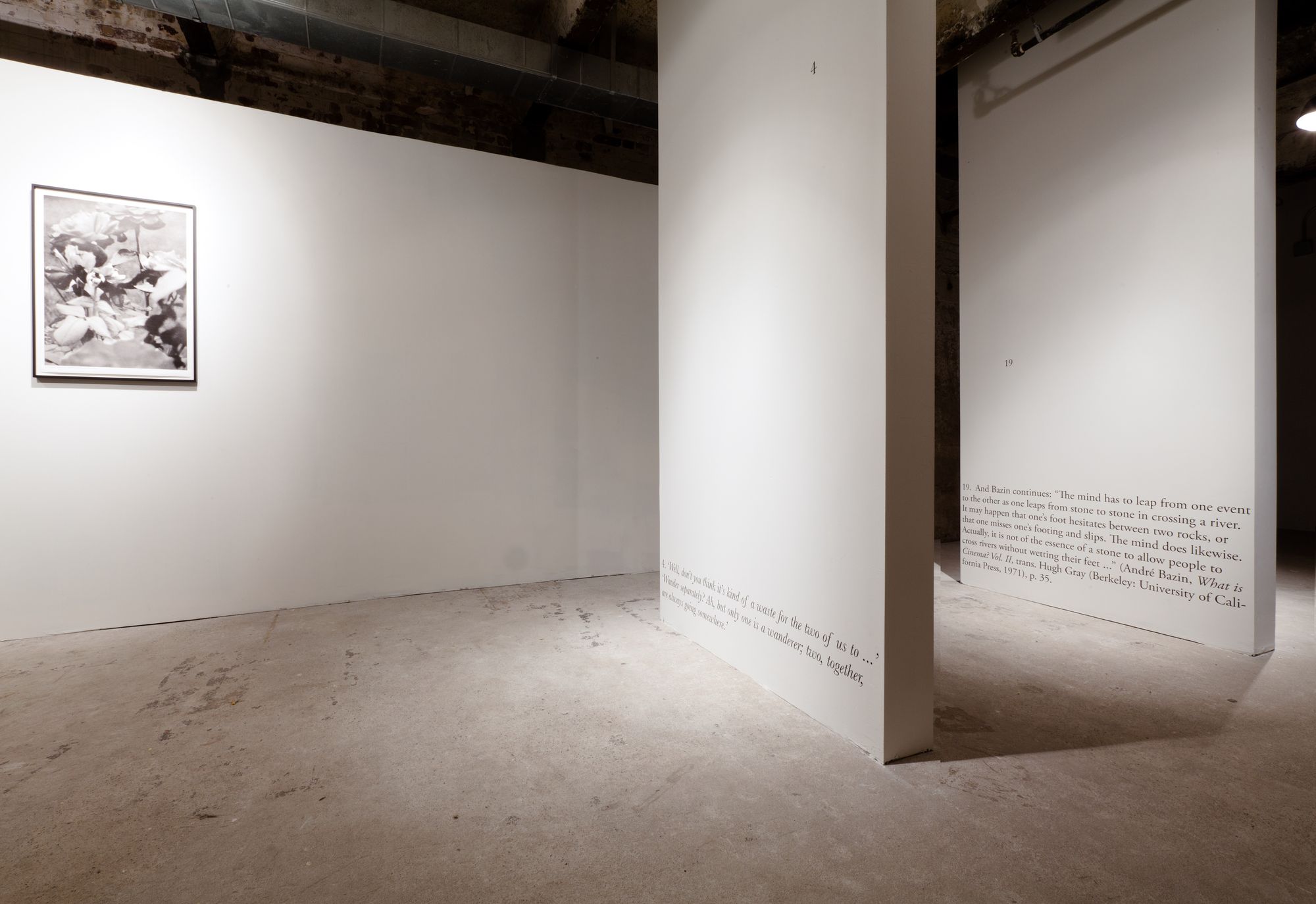
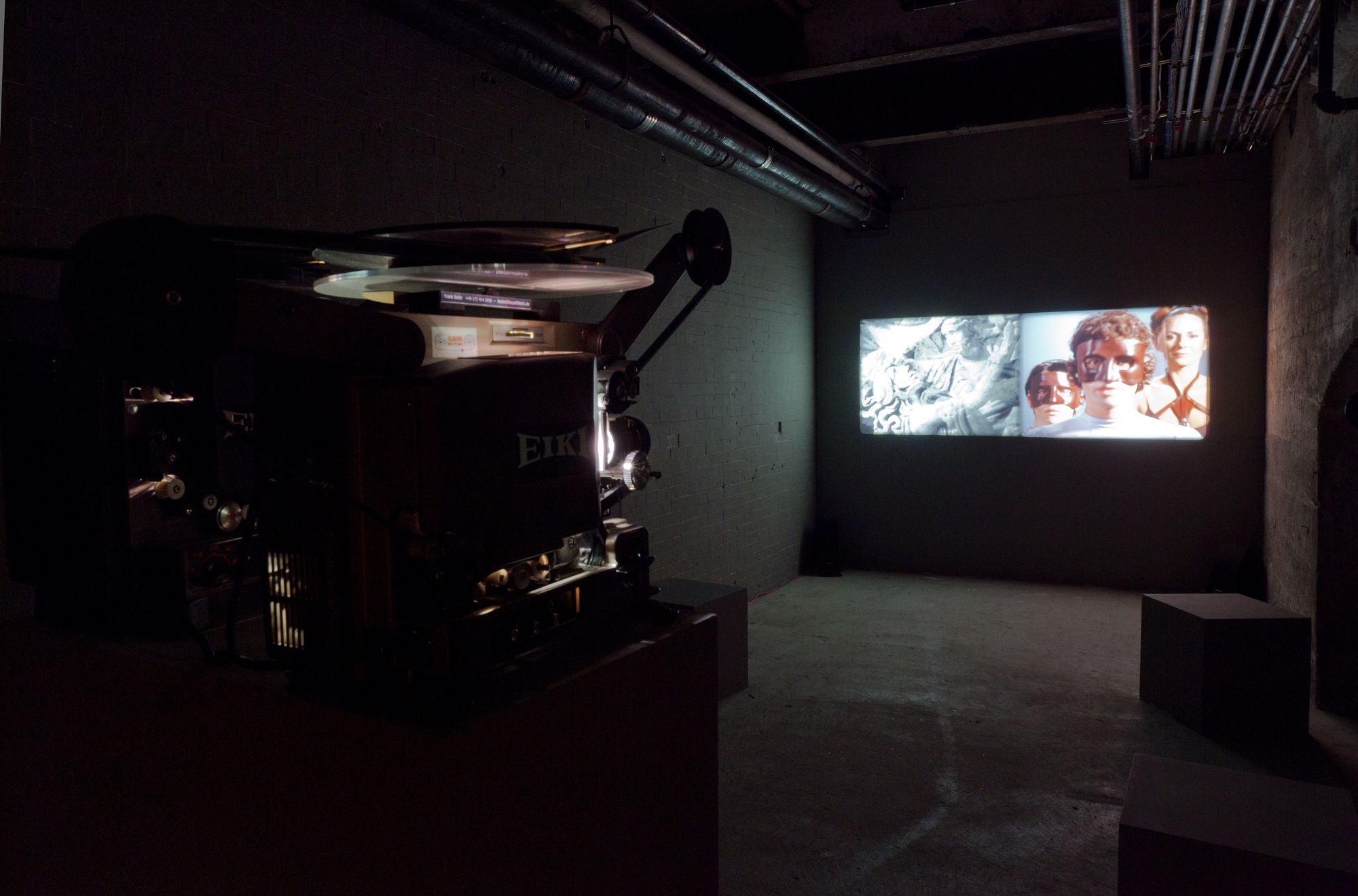
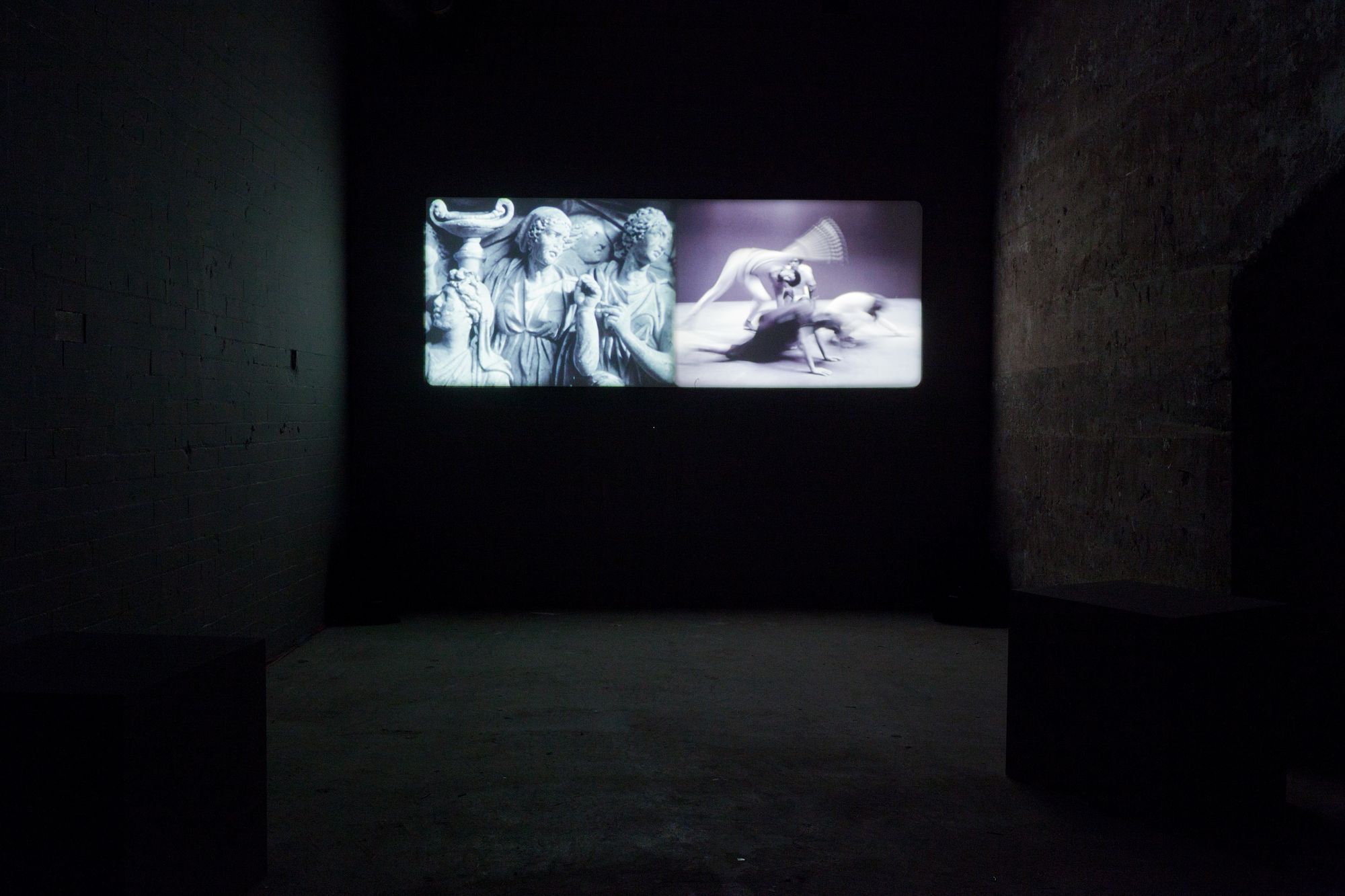
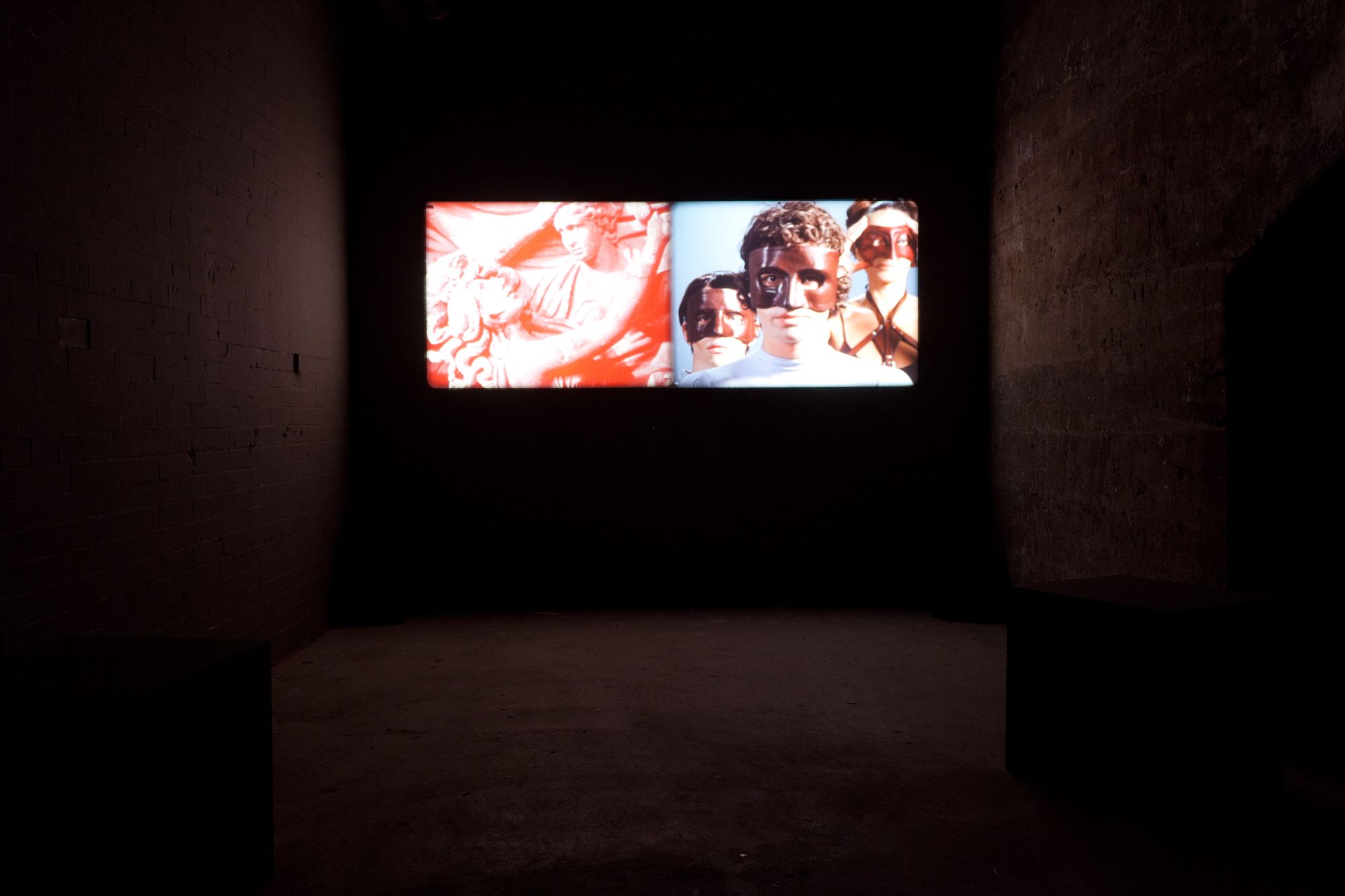
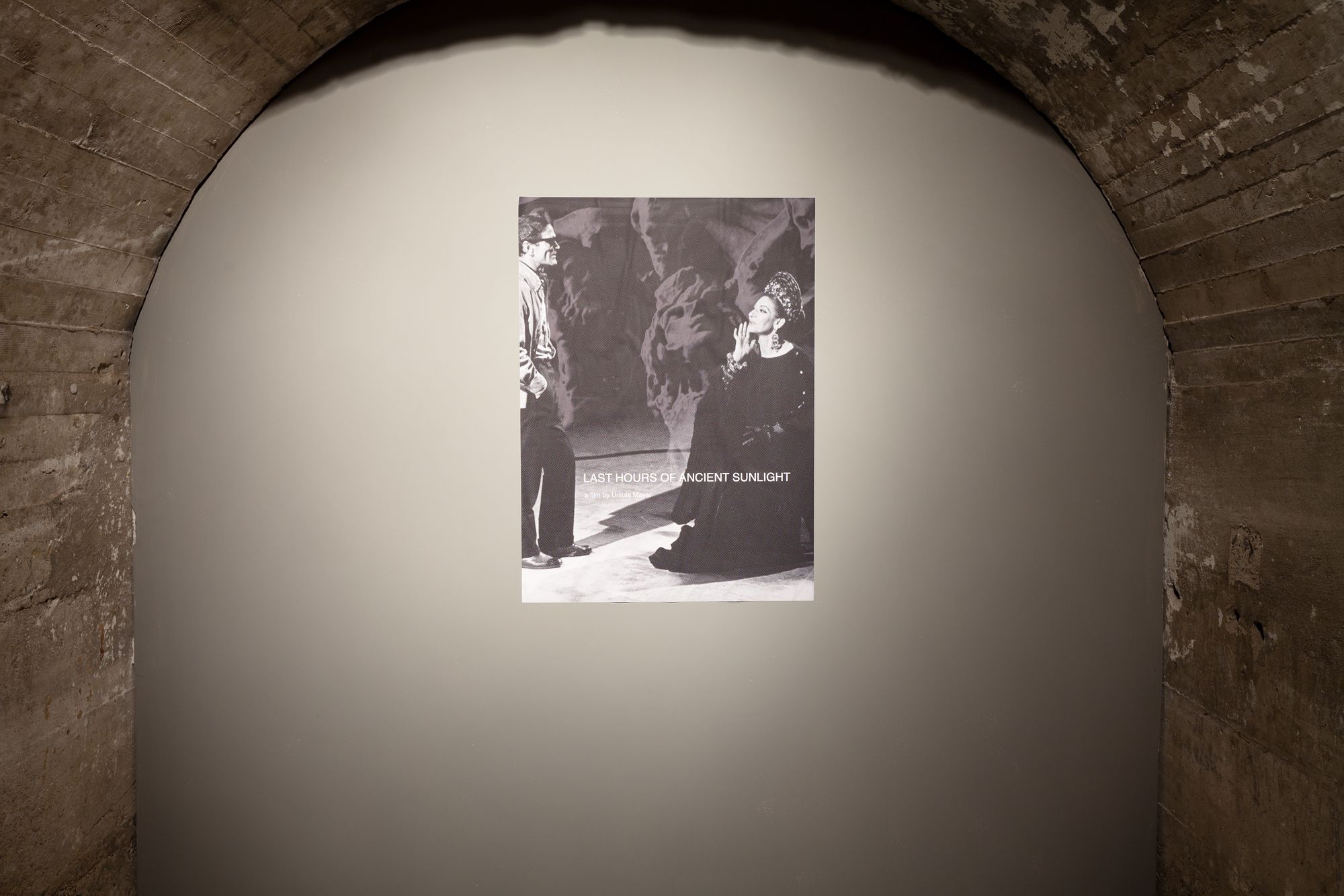
Alejandro Cesarco, The Reader, 2011.
Reading Room: Sarah Chacich, Angie Keefer, Matt Keegan, and Rita Sobral Campos
SculptureCenter is pleased to announce the third part of a unique exhibition series Short Stories, guest curated by Isla Leaver-Yap. Short Stories navigates the fabricated spaces of representation. It questions the role of art historian and critic as the best readers of an artwork, favoring instead the internal logic and fiction of the artist's practice. The series will feature rotating solo exhibitions by six New York-based artists, an onsite reading room, as well as readings and performances. Exhibiting artists include: Alejandro Cesarco, Iman Issa, Ursula Mayer, Ben Schumacher, Danna Vajda and Rona Yefman. The reading room, configured in collaboration with Angie Keefer, also features work by Sarah Chacich, Matt Keegan, and Rita Sobral Campos.
During each month of Short Stories, SculptureCenter's lower level galleries will be turned over to two artists who will each present an autonomous exhibition project. The rear ground floor gallery, meanwhile, will be transformed into a reading room, a locus and constant throughout the duration of project. It will feature art works, books selected by the artists in relation to their exhibition presentations, commissioned texts, audio works and other ephemera. This space will act as a site of production and dissemination, where the accrual of material will also serve as the documentation for Short Stories. Finally, in the closing week of Short Stories, the main gallery will be used as an event space by participating artists to feature performances, screenings, and talks.
Through the artist independently fashioned narratives, Short Stories presents work engaged in the architecture of how to read and write the object, the image, and the practice. Short Stories takes the notion of 'reading' as a framework through which an artist might begin to construct personal positions and self-determined subjects.
Alejandro Cesarco
The Streets Were Dark With Something More Than Night or The Closer I Get To The End The More I Rewrite The Beginning
Using film, photography and text, Alejandro Cesarco's practice investigates the agency of meaning, and how the expression of that agency is embedded within the practices of writing and reading, translating and misreading, repeating and remembering. The formal strategies of Cesarco's (isolating a footnote from its context, the ongoing compilation of indeces for an as-yet unwritten book, a video who's narrative structure is based on secrecy, for example) are often marked by an emotional register, where affect colludes with language to produce a series of metanarratives.
Cesarco's The Streets Were Dark With Something More Than Night or The Closer I Get To The End The More I Rewrite The Beginning (2011) is an installation that comprises a number of coalescing works: an artist's book; four photographs titled Fragile Images That Keep Producing Death While Attempting To Preserve Life: Flowers found in crimes scenes; The Reader, a slide projection accompanied by voiceover spoken by artist Lawrence Weiner; and a series of footnotes that punctuate the gallery space.
Casting the viewer in the role of detective, The Streets Were Dark is a tableau of interrelated works that each ask the question: what is it that we do when we look at and attempt to read a work? The exhibition's various titles and images borrow from literature, detective criticism, found texts, and writing of the artist's own invention. Stripped from their original context and stacked together in the gallery, these elements are repurposed to form a labyrinthine and fragmented narrative, where meaning (original and implied) is both the victim and the culprit. At one point, the voice of The Reader speaks gravely of "the paranoid representation of the writer as delinquent who erases his traces and hides his crimes." Taking a gamble upon the logic of association, the viewer is reminded that the fictional perpetrator of the crime always acts at the behest of the author.
Ursula Mayer
Last Hours of Ancient Sunlight
Ursula Mayer is an artist who works with film, photography and sculpture, and uses her various mediums to represent events--both historical and imagined--in a cyclical, suspended state. Questioning the veracity of singular historical narratives, Mayer enters into a dialogue with the creative possibilities of biography. Her practice is imbued with desire to transform the linear temporality of cinema into a seductive and mythic medium, filled with serpentine narratives that deny resolution in favor of a constant unfolding.
For Short Stories, Mayer presents her 16mm film Last Hours of Ancient Sunlight (2010). The double projection work is comprised of two unsychronized shots: one, a series of black and white views of a stone bas-relief; the other, a series of scenes shot in color and depicting a group of young dancers.
Loosely following the Greek myth of Medea (the daughter of the sun god Helios and wife of human hero Jason), the dancers perform gestures that move between a state of rehearsal and definitive action. Through the binocular alignment of the two films, the dancers' actions appear to echo the structure of the juxtaposed frieze, revealing a series of chance equivalences and double narratives. As their action moves towards a suggested (though unseen) climax, the dancers speak of a 'forbidden act' a sacrifice, or perhaps the ultimate transgression: the imitation of the gods. As the films play out, the figures in the stone relief are transformed into a mute audience of the performers, their statuesque pose mirroring the petrified stasis of the viewer in the gallery; the chronology of the mythic narrative is inverted.
Events
Sponsors
SculptureCenter's exhibition program is generously supported by grants from the New York State Council on the Arts; The New York City Department of Cultural Affairs; the Kraus Family Foundation; the A Woodner Fund; the Lambent Foundation Fund of The Tides Foundation, Lily Auchincloss Foundation, Inc., and contributions from our Board of Trustees and many generous individuals.
Short Stories is generously supported by Foundation for Contemporary Arts, New York.
Ursula Mayer's exhibition is generously supported in kind by Lux.

